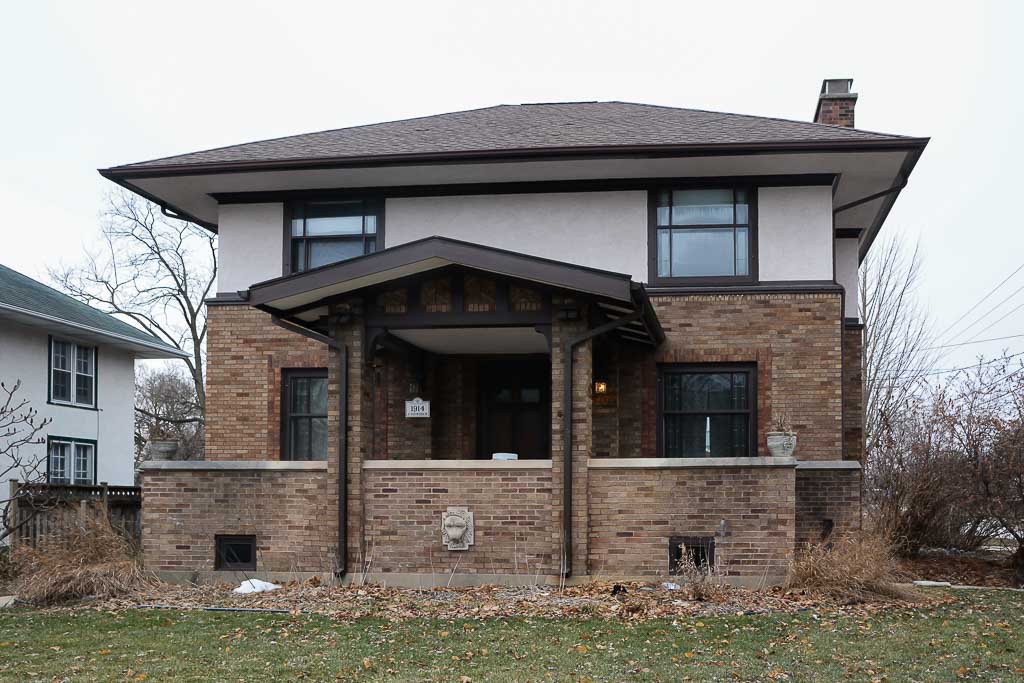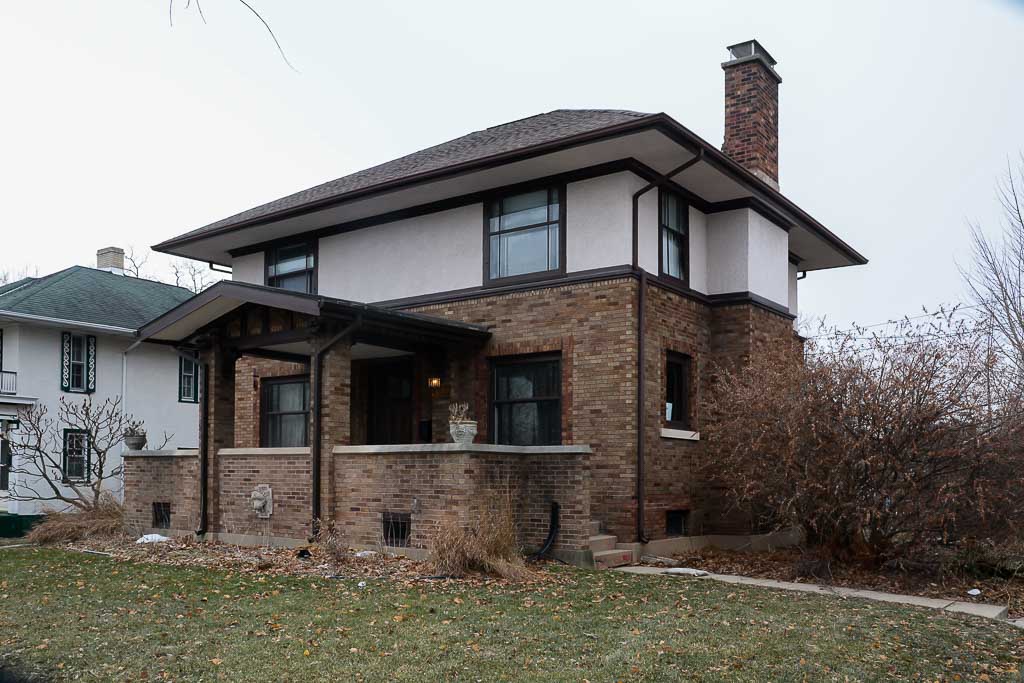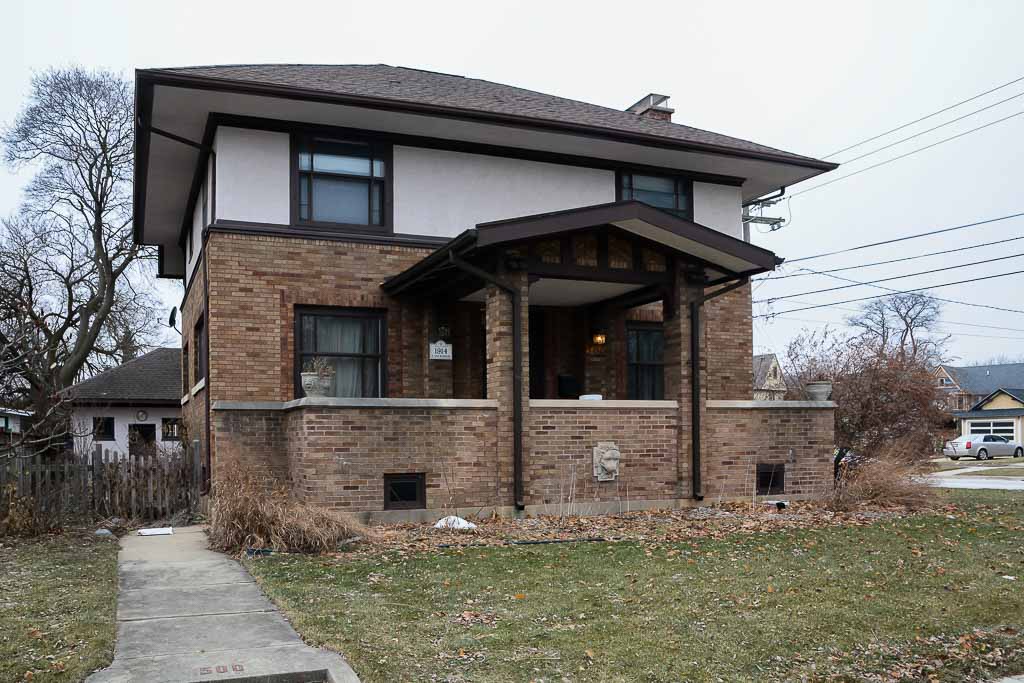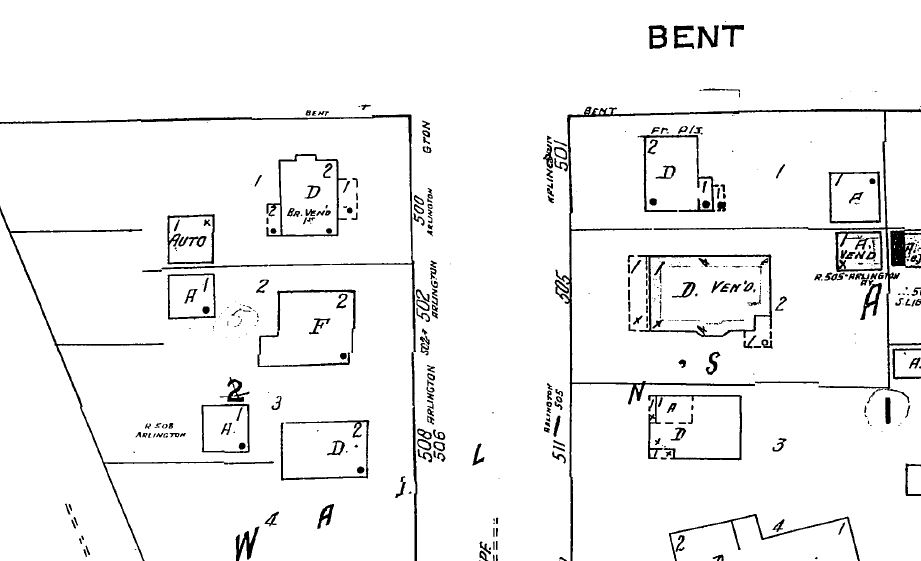500 ARLINGTON AVENUE
HISTORIC SIGNIFICANCE
In April of 1914, Elizabeth (nee Wallin) VanNostrand, a widow, deeded the property located at 500 Arlington Avenue to John G. Van Wicklin for the sum of $1,200. Subsequent Elgin City Directories listed a John G. VanWicklin as the owner of what was listed along the west side of Arlington Avenue, and was also captioned “Hose House No. 5.”
W. Wright Abell designed the home, who was a highly notable architect in the area. While Abell has many notable homes and buildings to his name in Elgin, one of his most famous was the Teeple Barn, located along Randall Road near the I-90 Tollway. It was destroyed by a storm in 2007, but not before Abell’s sixteen sided barn was placed on the National Register of Historic Places. The connection to W. Wright Abell as the architect is notable to the history of Elgin as a whole, and also this neighborhood. Abell designed 502-504 Arlington Avenue as well.
The original owner of the property, Elizabeth (nee Wallen) VanNostrand, was married to Peter who passed away 24 years before she deeded the home to John VanWicklin. Together the VonNostrands had 5 children, all appearing to be born in Elgin. Peter was born in Somerset Count, New Jersey. Peter and Elizabeth were married in Kane County in April of 1856.
After VanNostrand and VanWicklin were owners of the home, it is unknown who lived in the home until the early 1990s when the then-current homeowners applied for this Historic Plaque Program.
ARCHITECTURAL SIGNIFICANCE
500 Arlington Avenue is an example of the Foursquare typology with Prairie style elements. Foursquare, as the name of the form indicates, is comprised of a square floor plan, sitting at 2.5 stories tall, with a hipped roof. The Prairie Style is an American style conceived by Chicago architects who were known as Prairie School. Features are a low pitched, hipped roof with wide eaves; two stories, lines that emphasize the horizontal appearance of the Illinois prairie use in window bands or banding between stories. Horizontal emphasis located in the window designs are also a common feature of this style.
TIMELINE OF PREVIOUS OWNERS
Sources: 1991 Heritage Plaque Application; Audio: TextAloud




